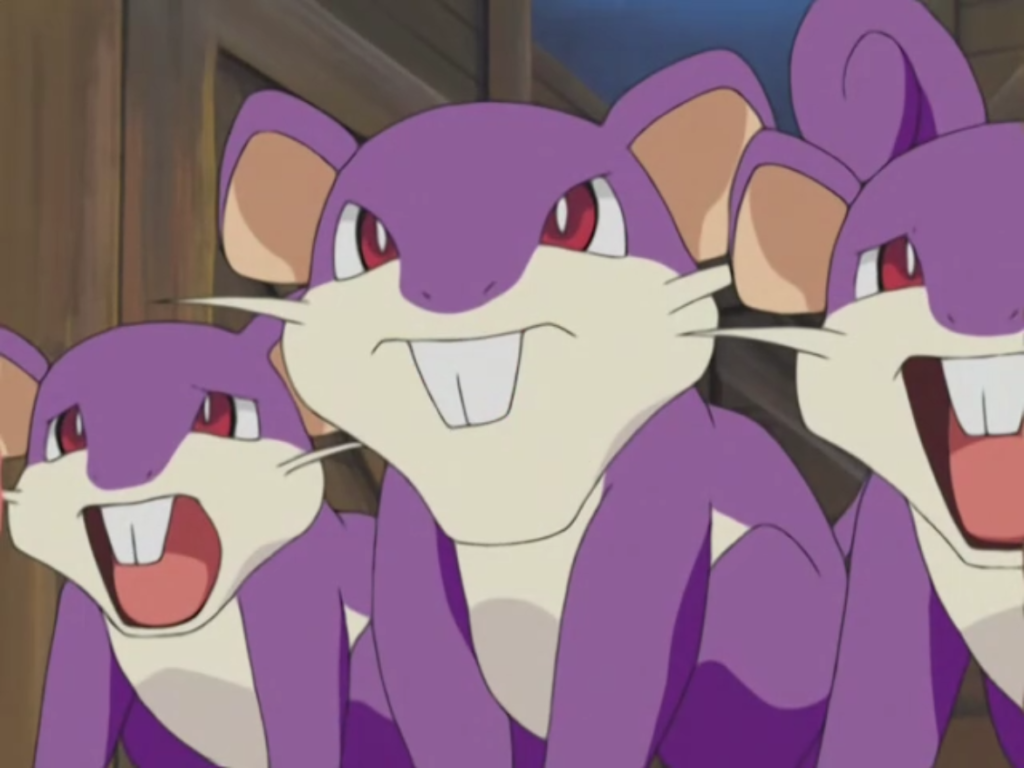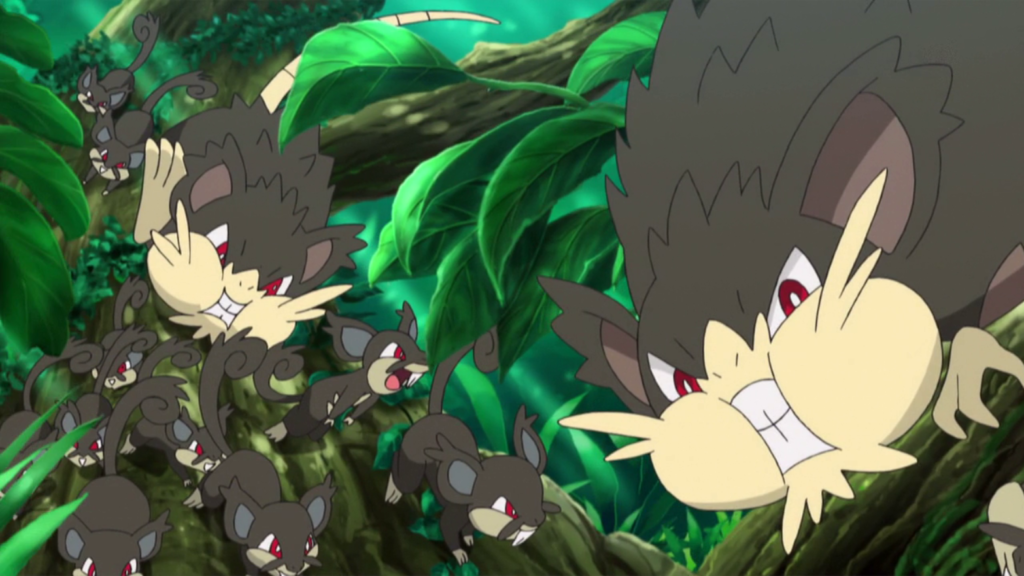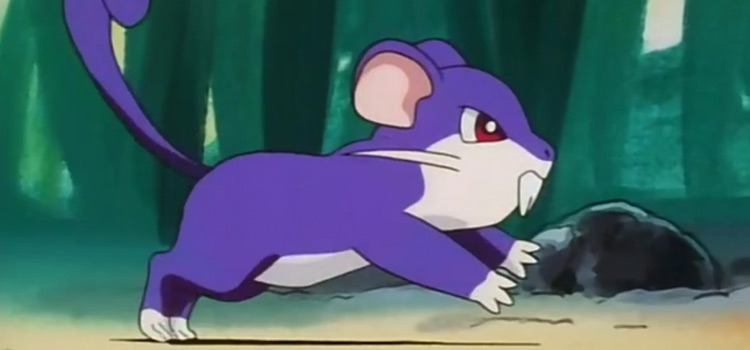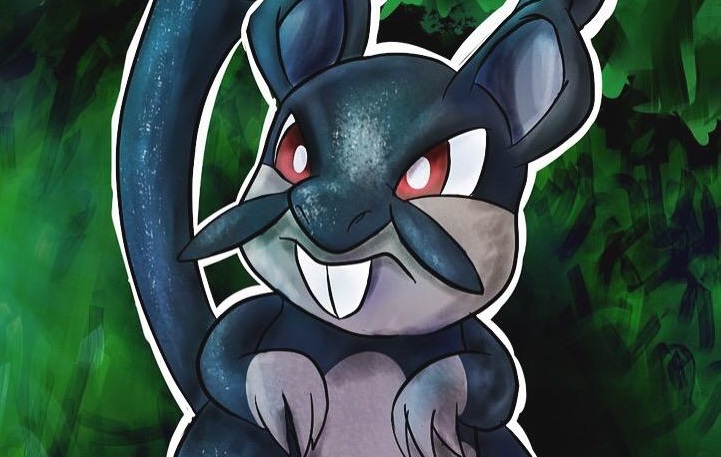Rattata is a Normal type Pokemon introduced in Generation I. It evolves into Raticate starting at level 20. In Alola, Rattata has a regional variant that is Dark and Normal type. In Pokemon Sun and Moon, Ultra Sun and Ultra Moon, it evolves into Alolan Raticate when leveled up at night starting at level 20. Take a look below for 28 awesome and interesting facts about Rattata.
1. Rattata is a small, quadruped rodent Pokemon.
2. It has purple fur with a cream-colored face, paws, and underbelly. It has narrow, red eyes, rounded ears with cream-colored insides, and a single whisker on each cheek.
3. Its long tail is tightly curled at the end. Its most notable feature is its large teeth.
4. Like most rodents, its teeth grow continuously throughout its life and must be worn down by gnawing.
5. A female Rattata will have shorter whiskers and lighter fur.
6. Rattata can live wherever it can find food, which it searches for most of the day.

7. Thanks to its sharp fangs, it is able to eat nearly anything.
8. When it is threatened, Rattata can deliver a powerful bite. Its large teeth are also useful when using its former signature moves, Hyper Fang and Super Fang.
9. Furret is the natural predator of the Rattata. Its hardiness lets it live in many environments, although it mainly lives on plains and savannas.
10. Because it reproduces so quickly, a pair of Rattata can quickly colonize an area.
11. Rattata are non-native to Alola and arrived in cargo ships.
12. The Rattata population in Alola was booming until Yungoos was imported as a control measure.

13. In order to avoid these new predators, Rattata altered its habits.
14. It moved to more urban areas, became nocturnal, and formed large nests led by Raticate.
15. Alolan Rattata searches out fresh food by smell and ignore anything spoiled. It has even been known to sneak into people’s homes to find food.
16. It has dark gray fur and grayish-purple ear insides. There are two tufts of fur on each ear and near the tip of its tail. Its long, thin whiskers are replaced by shorter, thicker tufts of fur as well.
17. The line where its cream underbelly meets its gray fur is ragged instead of smooth. This variant of Rattata is the shortest Dark-type.
18. Alolan Rattata is the first Dark-type Pokémon in National Pokédex order.

19. In the Pokémon Red and Blue beta, Rattata was originally known as Rattatak.
20. Rattata is notorious for being associated with the F.E.A.R. strategy.
21. Rattata and its evolution share their category name with Pikachu, Raichu, Sandshrew, and Sandslash. They are all known as the Mouse Pokémon.
22. Rattata has gained notoriety among the fanbase due to Youngster Joey on Route 30, and his phone calls claiming his Rattata to be within the top percentage of the species.
23. Rattata has the lowest base HP of all Normal-type Pokémon.
24. Alolan Rattata has the lowest base HP and Special Attack of all Dark-type Pokémon.

25. Alolan Rattata may be considered a counterpart of Yungoos. They can be caught at certain times of the day (Yungoos at day, Alolan Rattata at night). They also evolve into Gumshoos and Alolan Raticate, respectively, at level 20 at their respective times. Also, their evolved forms are the Totem Pokémon in their respective games (Gumshoos in Sun and Ultra Sun, Raticate in Moon and Ultra Moon).
26. Rattata is based on a rat. The shape and position of its ears might be derived from the dumbo rat.
27. Alolan Rattata may be based on how Hawaiian rats tend to be more vicious than most other areas of the world, which would explain its Dark typing. Their regular attacks on sugar cane fields forced the locals to import the small Asian mongoose, explaining the relationship between Yungoos and Rattata. However, the small Asian mongoose is diurnal while rats are nocturnal, thus the small Asian mongoose was ineffective at its intended role and became an invasive species. This is reflected in-game by the fact that Yungoos can only be found during the day, while Alolan Rattata can only be found at night.
28. Rattata may be a combination of rat and attack, evident from its prototype name, Rattatak. It may also incorporate the onomatopoeic word rat-a-tat.




